Trying to figure out how many SEO keywords to use per page can feel like walking a tight rope.
Use too few, and you might miss out on ranking opportunities. Use too many, and you’re treading into keyword-stuffing territory.
But innovative keyword research ensures you’re targeting the right mix of primary and secondary keywords, so your content ranks without risking penalties.
In this blog post,
We’ll break down the exact number of SEO keywords you should aim for per page, how to balance using the primary keyword and secondary keywords, and how to avoid common SEO mistakes.
If you’re a blogger, SEO professional, affiliate marketer, or even a beginner, this guide is packed with practical insights that will help you optimize smarter and rank better, and help business owners achieve their business goals.
What Is an SEO Keyword, and Why Does It Matter?

SEO keywords are specific terms, words, or phrases that people type into a search engine when looking for content, products, or services.
Think of it as the bridge that connects people’s searches with the content the website creates.
When used correctly, SEO keywords help search engines understand the context of your page.

They signal what your content is about so Google can match it with relevant search intent. Without these keywords, even the most valuable content might go unnoticed.
For instance, if you’re writing about “best laptops for bloggers” and fail to include that specific keyword, you could miss your target audience entirely.
How Many SEO Keywords Should I Use Per Page?
This is one of the most frequently asked questions: How many SEO keywords should I use per page?
The answer? It depends on the length and purpose of the content.
As an SEO thumb rule:
Target one primary keyword per page and support it with 3 to 8 secondary keywords that are closely related to the primary keyword.
This rule helps the search engines to understand your content without overwhelming the reader. And increase the chance of ranking.
The number of SEO keywords isn’t fixed, but balance is crucial.
Using many keywords for SEO might feel like a shortcut to more traffic, but it often backfires.
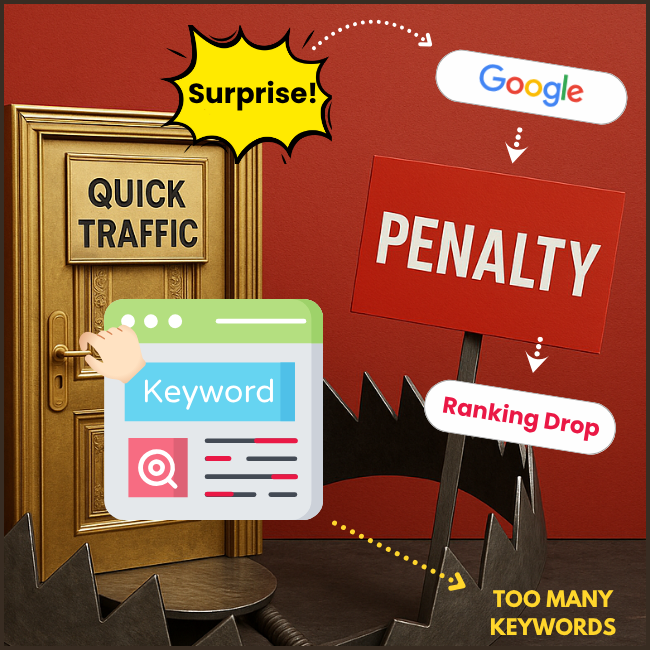
According to the seo experts, you should focus on relevance rather than quantity.
Instead of stuffing in a large number of keywords per page, choose one keyword or two keywords that align with user intent and your main topic, as this helps search engines understand your content and ensures users find complete information to answer their queries.
Is One Primary Keyword Per Page Enough?
Yes, in most cases, one primary keyword is enough.
In fact, use one primary keyword per piece of content to keep your focus tight and your message clear.
Google has evolved. It doesn’t just match exact phrases; it understands semantic meaning.
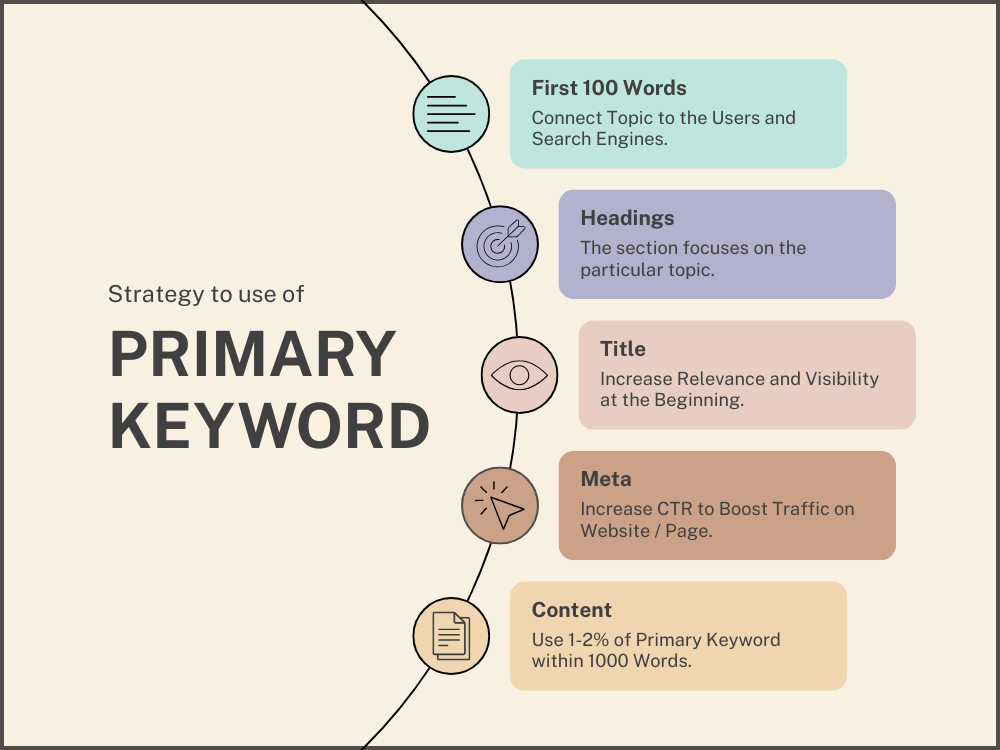
If you target one primary keyword, Google will likely associate it with related phrases as long as your content is strong.
Say you run a blog on home gardening.
A post focused on the keyword “organic composting tips” can also rank for variations like “how to compost organically” without having to use the exact phrase.
Tip: Repeat it naturally.
What Are Secondary Keywords, and How Do They Help?
Secondary keywords are supporting terms that give context and depth to your primary keyword.

They help search engines further categorize and rank your content.
For example,
If the primary keyword is “email marketing tools,” some secondary keywords related to the topic are
- “automated email tools,”
- “email marketing campaigns,”
- And, “best email platforms.”
They also help reach broader search intent by covering queries that people search for related to your topic.
When you include them in your content, you’re casting a wider net for ranking opportunities, which is one of the best ways to rank effectively.
How to Find Primary and Secondary Keywords Effectively
Start with a reliable keyword research tool and find primary and secondary keywords based on search volume, keyword difficulty, and competitive analysis.
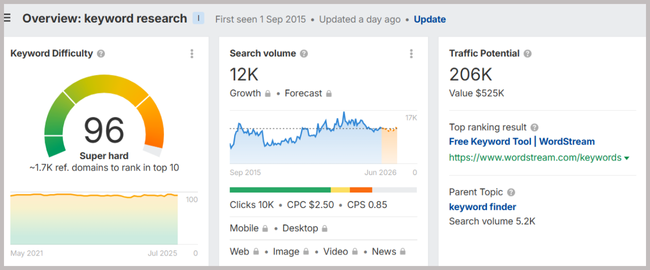
Please pay close attention to long-tail keywords, as they often have less competition and more precise user intent.
- Use Google auto-suggest and the “People also ask” sections to see what phrases people commonly use in Google searches.
- If you want to find more user queries based on your topic or targeted keyword, then you can also take the help of the AnswerThePublic platform.
Could you review your competitors for primary and secondary keywords?
Competitor analysis can highlight relevant keywords you may have overlooked. Use an SEO tool to extract their keyword data and refine your list.
Keyword Density: Still Relevant in the Current Year?
Keyword density refers to the number of specific terms or keywords in the total word count of a page.
While it once dominated search engine optimization discussions, today, it’s less critical than creating valuable content that meets user intent. That said, maintaining a healthy balance helps.
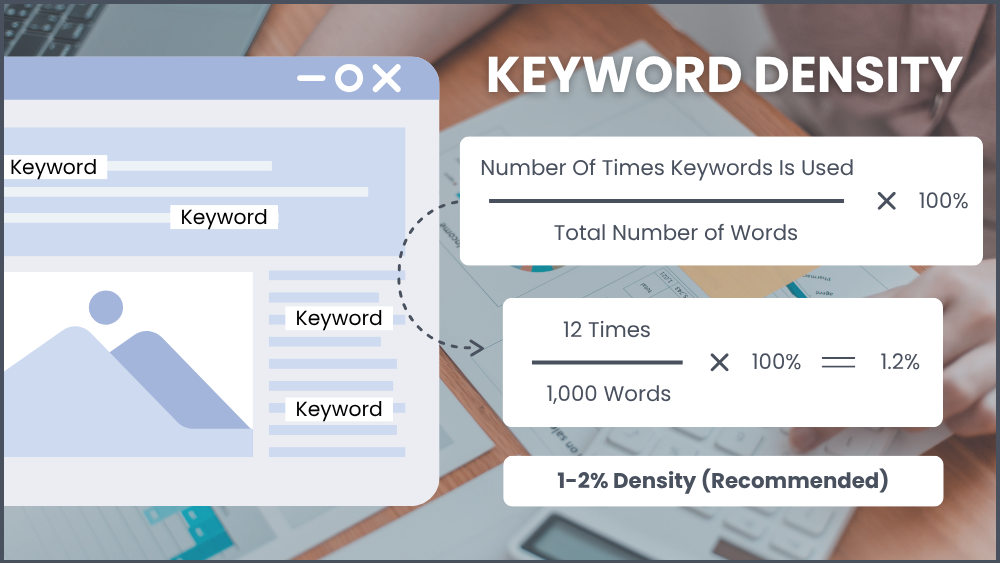
If you create a keyword density of around 1-2% of your target keyword, it works well, especially when keywords are specific and strategically placed in headings, introductions, and conclusions.
Rather than obsessing over how many times to use a keyword, you can focus on how naturally it can be included in your content while maintaining readability.
How to Optimize Your Content & Avoid Keyword Stuffing
- To optimize your content without keyword stuffing, write naturally.
- Please consider what your audience wants and deliver information to answer their questions.
- Use synonyms, keyword variations, and secondary keywords to maintain flow.
- Leverage content writing tools to highlight key phrases that engage your readers and help you maintain a balanced keyword strategy.
- Also, structure your content using optimization tools that assess readability, user experience, and keyword usage.
Remember, keyword stuffing hurts more than it helps; thus, avoid stuffing. Help search engines understand by maintaining a clear structure and hierarchy.
What Role Do Semantic and LSI Keywords Play?
Semantic keywords and LSI keywords (Latent Semantic Indexing) help you to optimize your content so that search engines can connect it with the right search intent.
These aren’t exact matches, but keywords related to your main topic.
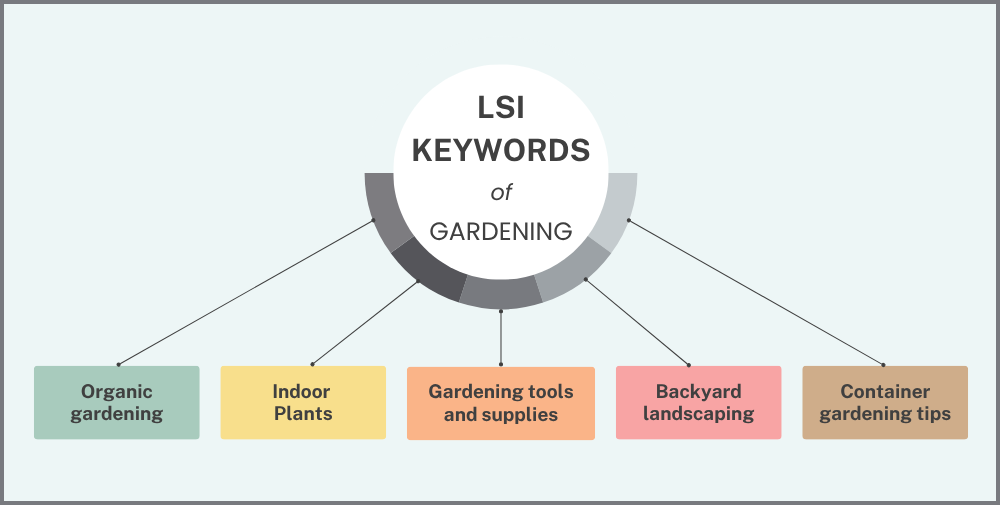
If your content is about a “complete gardening guide,” semantic keywords might include “organic gardening” or “gardening tools and supplies”.
This supports your core topic without repetitive language.
Including these helps your content feel more natural and expands your chances of ranking for keyword phrases you didn’t explicitly target.
It’s one of the best SEO practices for the current year and beyond.
Which SEO Tools Help Find the Right Keywords?
There are dozens of great SEO tools, but here are a few of the best keyword research standouts: Tools like
- Ahrefs: Excellent for in-depth keyword research, gap analysis, and optimization.
- Google Keyword Planner: To find related keywords or ideas.
- AnswerThePublic: Great for discovering questions and search engine queries.
- SurferSEO: Analyzes your content to ensure it aligns with best SEO practices and user intent.
Each tool can help you identify primary and secondary keywords, determine user intent, and develop a comprehensive list of keywords tailored to each page.
Final Thoughts: Actionable Tips to Get the Most Out of Your SEO Strategy
Mastering how to use SEO keywords per page isn’t about counting; it’s about context, clarity, and optimization.
Here are your key takeaways:
- You can always focus on using just one primary keyword per page to maintain clarity.
- Support your main topic with 3–8 secondary keywords that are closely related to the primary keyword. Use them in your content.
- Use semantic and LSI keywords to add depth and variation.
- You can avoid common keyword stuffing; instead, aim for natural integration.
- Rely on a keyword research tool to guide your strategy.
- Align keywords with search intent and deliver real value.
- You should regularly audit your content using optimization tools to maintain search engine rankings.
Want to take the lead in digital marketing and dominate the SERPs?
Start by refining your keyword research approach. Try using top SEO keyword research tools and make your next blog post your most optimized one yet!
FAQs
Q1) How many keywords per 1,000 words should I use in an article for ranking on search engines?
Ans: Use 7–20 keywords per 1,000 words, focusing on one primary keyword and several secondary keywords to cover the topic naturally. When you use a content strategy with 0.5%–2% keyword density, it keeps SEO balanced and user-friendly.
Q2) Is using AI SEO tools helpful in finding the right keyword balance
Ans: Yes, AI SEO tools are helpful as they analyze search data and suggest the correct keyword balance, ensuring your content stays natural and worth ranking.
Q3) How do I select the best optimization tool for my SEO strategy?
Ans: Choose the best optimization tool by matching its features, like keyword research, site audits, and backlink analysis, to your SEO strategy goals.






